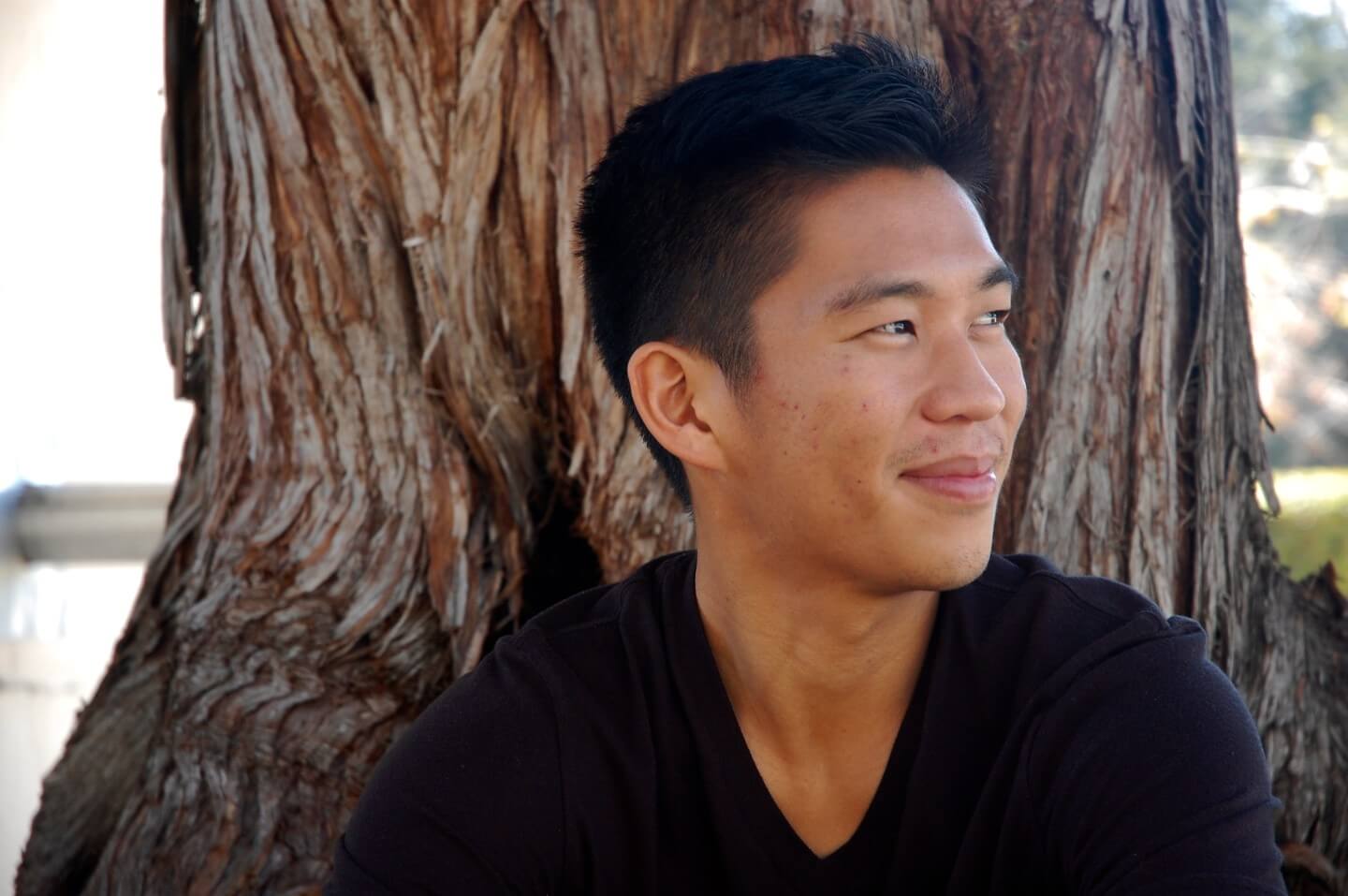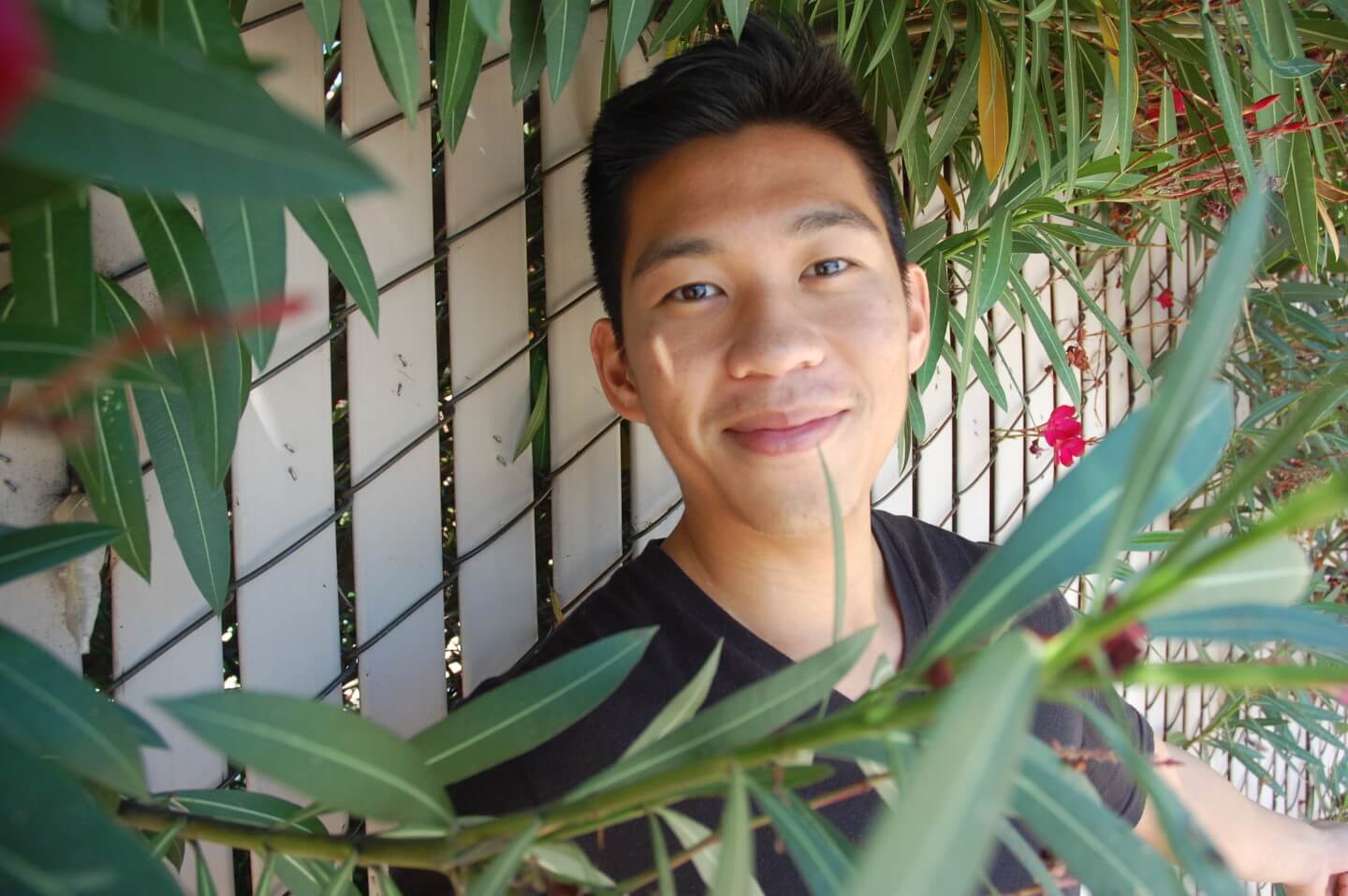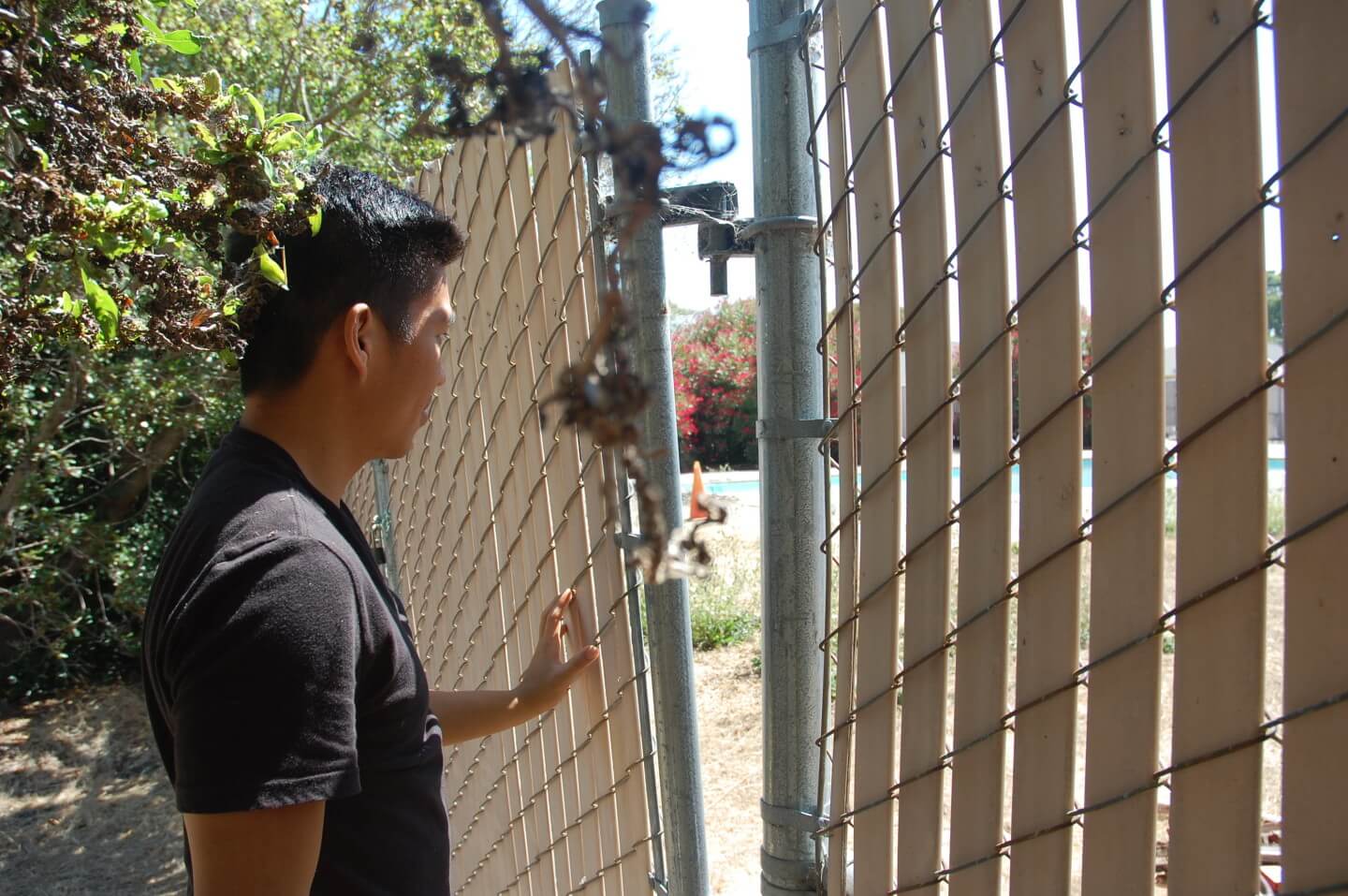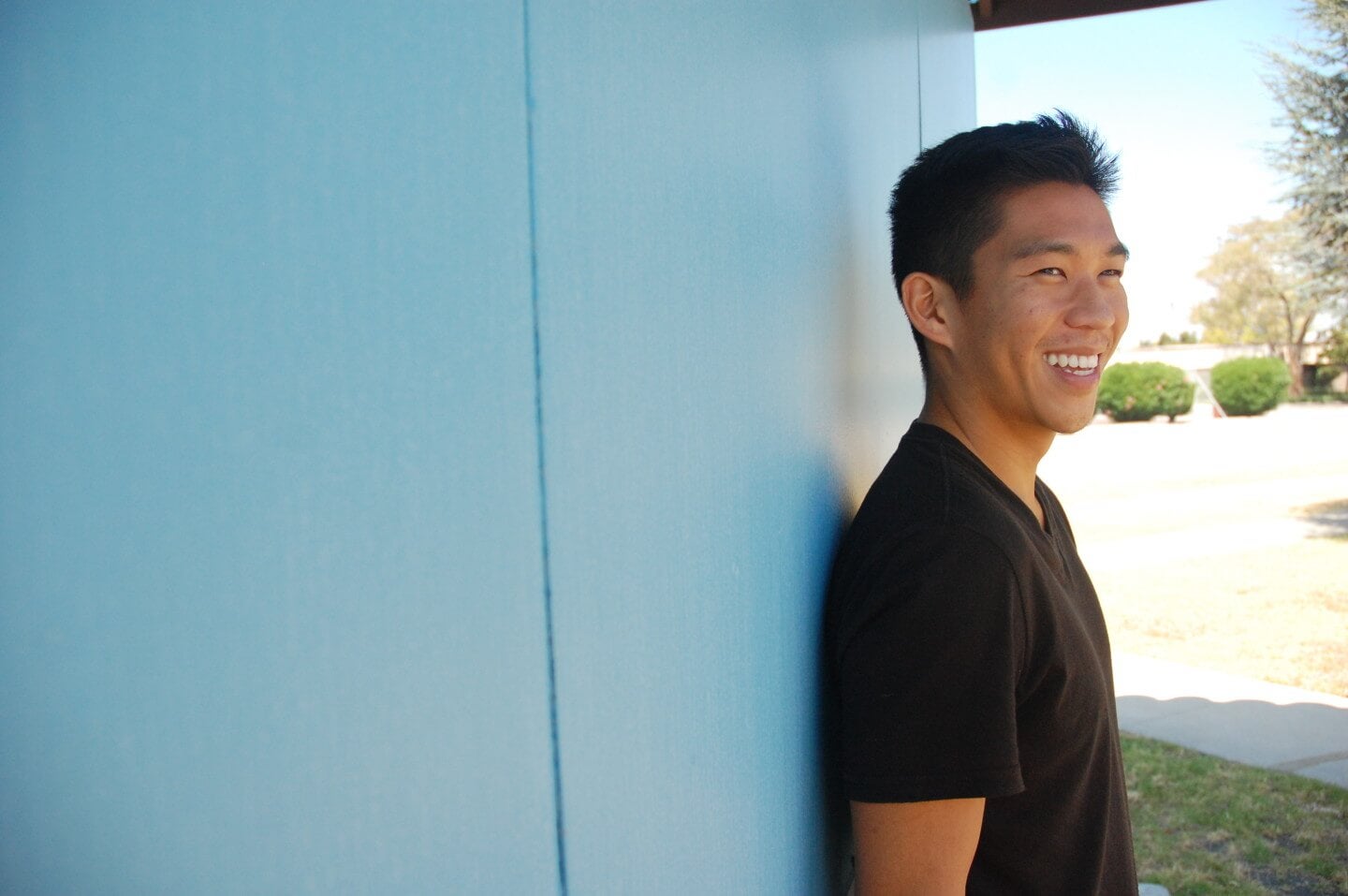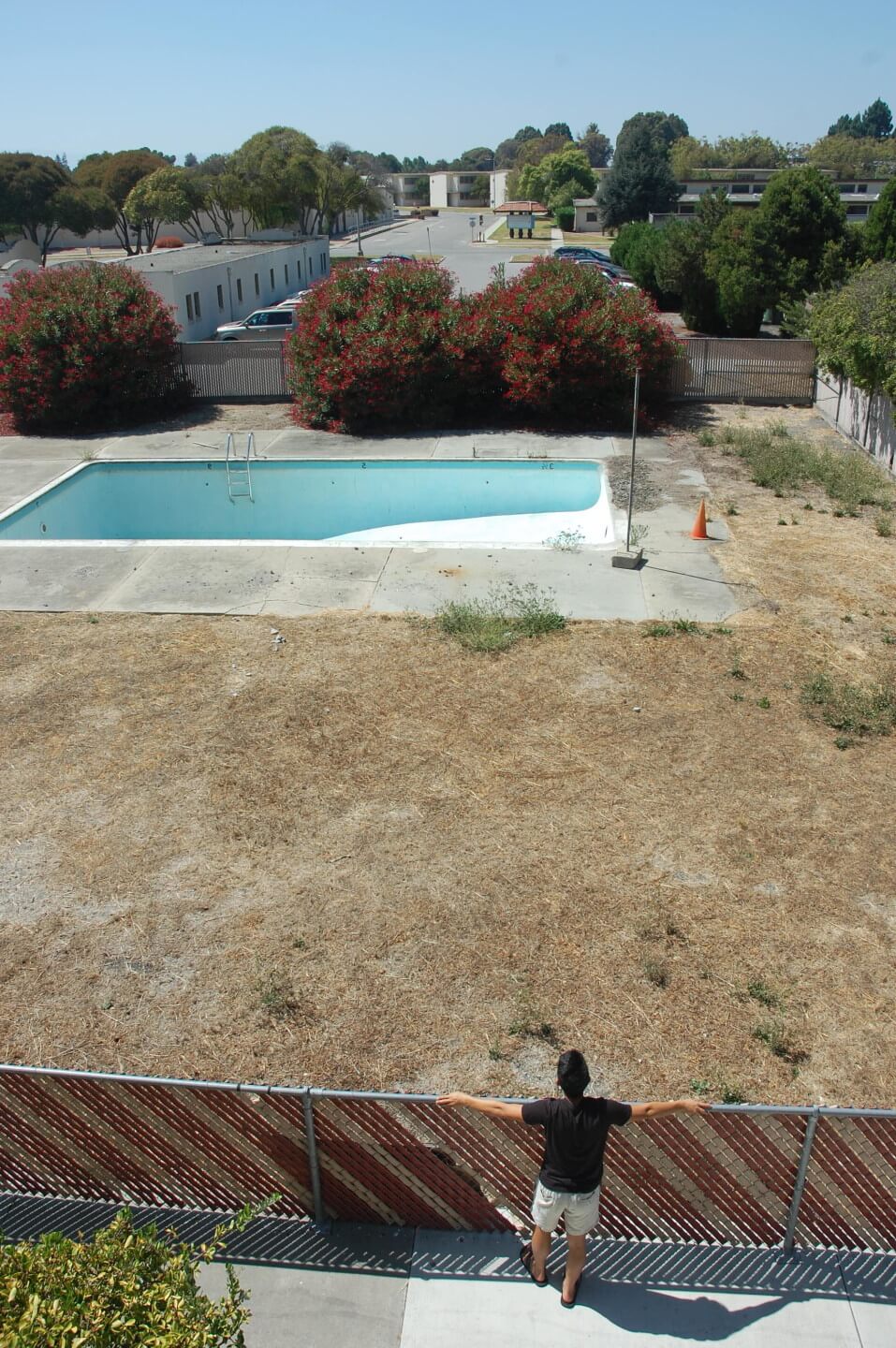Sly Lee: Marine Scientist, Science Communicator, Entrepreneur
Graduate Studies Program 2015 Alumni
Honolulu, Hawaii and San Francisco, CA
If Silicon Valley had a mind of its own, which it may one day, its dreams would be comprised of grandiose tales of breakthrough technology and market disruption.
But pure innovation isn’t the only mindset in the Valley. Others prefer focusing on technology as a vehicle for bringing humanity closer together, for catalyzing change, and for sparking that curious explorer within us all.
One of these people may be Sly Lee.
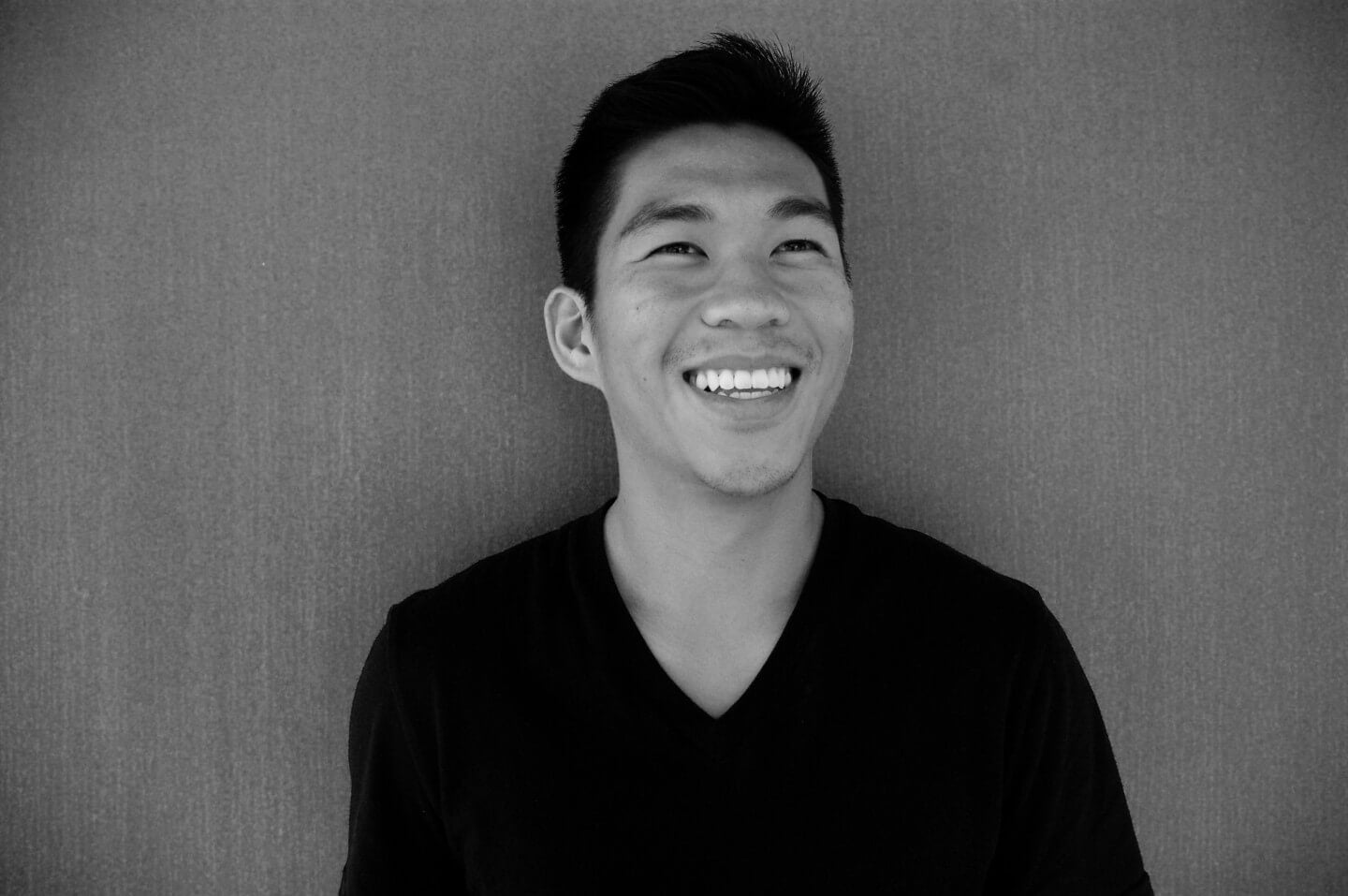
I first met Sly while playing soccer on the center quad outside Singularity University’s campus in Mountain View, CA with a group of Graduate Studies Program (GSP) participants. I walked off the field early to get back to work and heard someone yell, “Hey everyone, Alison is leaving! Say, ‘bye’ to Alison!” That’s Sly.
Sly grew up landlocked in Oxford, Mississippi, and recently moved to the Bay Area from Honolulu, Hawaii where he spent his days largely underwater documenting some of the world’s most coveted coral reefs. As the founder of The Hydrous, a non-profit organization using their new 3D modeling system to advance research and education in marine science, Sly produces immersive visual experiences using a technique called reality capture.
We know less about parts of the ocean floor than we do about the surface of the Moon, but technology, from robotic sensors to advanced imaging, is now filling in the details. The study of coral reefs has traditionally relied on the rugosity chain, little more than an underwater measuring tape. Now, using cheaper, smaller, and more powerful sensors and computers, technologies like Sly’s are digitizing reef research. Since its creation, The Hydrous’ work has been featured in Fast Company, Wired and National Geographic.
The intersection of science, design, and technology is Sly’s sweet spot, and he pieced this career together through sheer curiosity. “In school, you’re taught to go into very specific siloed fields. When we started The Hydrous, I realized that there’s something pretty interesting once you mix different fields—they can complement each other to help translate science, and even make science more interesting.”
When I asked Sly about the mission behind The Hydrous, one comment stood out,
“The fundamental question is, how do you love or understand something you will never see?”
Sly wants to inspire and empower citizen scientists by bringing them the ocean in 3D.
Alison: If an 8-year-old asked you, “What draws you to the ocean?” how would you respond?
Sly: The oceans are an alien world. It’s a place where we are not meant to survive. I think 8-year-olds could understand that we’re all explorers. I think we know our exploratory ambitions when we’re younger, and we lose that for some reason as we get older, or some people do. But the oceans are an amazing place to explore.
Alison: In your application video to Graduate Studies Program you said that the oceans endure all of the global grand challenges. Could talk a bit more about that?
Sly: The oceans are a huge part of the world. Carl Sagan called it “the pale blue dot.” It’s mostly covered in water. And because of that, for the last few centuries, humanity has kind of treated it as an infinite resource. They’ve taken vast amounts of fish from it, 90% of fish stocks are already gone. It’s kind of our waste receptacle. One of the phrases back in the day was, “Dilution is the solution to pollution.” That the ocean is so big, you can just dump whatever you want in it, and then it will just dilute itself to nothing. But now, we’re finally seeing that that’s not the case.
Most of the world lives around oceans, or at least ocean coastlines. I think that’s a huge place to possibly impact people. Especially as the population increases, we’re relying more and more on the oceans, because of things like drought, and lack of space for food. It’s definitely a place ripe for disruption.
Alison: Can you tell me about the mission of The Hydrous?
Sly: During grad school, I saw that a lot of the science was not getting out to the public, a lot of the data was stuck in academic papers. I think people genuinely are interested in science, but there’s just not a good medium or format for them to digest it in an interesting and meaningful way.
Hydrous is actually a real word; it just means anything related to water. We wanted to craft the mission to show we’re interested in water, and the human integration in water, hence the name.
A few years ago, a friend of mine, who’s a graphic designer, and I thought there was a really good potential way to mix our backgrounds, especially in the field of marine science. So we created a site aiming to use beautiful visuals to convey data in the marine realm. We started off with videos, pictures, and little stories, but we quickly found really interesting technology, and specifically, 3D modeling underwater, and I took that and applied it to coral reefs.
We also run conservation based expeditions open to the public, where we partner with local organizations and stakeholders in island nations to provide tools and education to effectively map their reefs, monitor resources, and build sustainable frameworks. We recently completed our first expedition in Indonesia as a collaboration with Makercorps.
Another interesting partnership is with Autodesk, where we’re creating an online platform to map all of the worlds coral reefs in the next years and which allows anyone in the world to contribute to the cause by uploading their own 3D corals.
Alison: What are the largest barriers to entry for people looking to improve the study of marine science or innovate within the field?
Sly: To innovate within in it? This is hard, and this could be very controversial, too.
Alison: You can pass on this question if you’d like.
Sly: No, no. I love saying controversial things.
My personal experience is that it’s hard for people to really progress marine science because it’s still kind of an old boys’ club.
There are still a lot of really powerful, really well funded, and published scientists who push back on the latest technology. It’s really new and sometimes it’s hard to understand the value for them. But I think it’s changing with the younger scientists, like our generation.
There’s also an internal push back for a lot of scientists to put things in layman’s terms. To them, translating science in a visual and digestible way to the public is considered fluff material, which is really insulting to non-scientists and myself.
Alison: You’ve talked about the importance of moving from 2D to 3D with modeling coral reefs, and the possibilities that opens up. Can you tell me more about that?
Sly: It’s crazy. Scientific research on coral reefs is super antiquated. For example, the state-of-the-art in terms of in situ, or in environment measurements, only utilize two-dimensional metrics. Things like using a measuring tape, literally an underwater measuring tape, or what we call a rugosity chain, which is literally a piece of chain mail that we lay down on the coral.
It hurts them when we lay down this chain, and then it only really measures the two-dimensional complexity. But, this is all done with the ultimate goal of understanding the three-dimensional complexity.
As with all science, you can only take a snapshot of something, a really small sample size, and you try to extrapolate from there. The power of 3D is that we can capture way more of our object of interest, or environment of interest, and then we can get so much more data and not have to extrapolate as much.
Alison: How would you explain reality capture to someone outside the field?
Sly: It’s a funny phrase. It was just coined maybe last year. It is fundamentally different than 3D modeling, even though it’s easier for most people to comprehend what 3D modeling is. Reality capture is actually capturing what is in the real world and digitizing it. You digitize it in 3D, but it is actually not a 3D model because a model indicates some artistic rendering of that. But this is the physical data that you capture in the real world and then digitize it.
Alison: What other technologies are you exploring integrating with your work and with the current technologies you use, for example, virtual reality?
Sly: Actually, this year is super exciting because we’re going to be working with virtual reality content developers to put reality capture into VR so people can do a virtual swim through of a reef. We’re going to be talking to Jaunt right here in Palo Alto and also Google’s Jump, their 360 GoPro underwater mount.
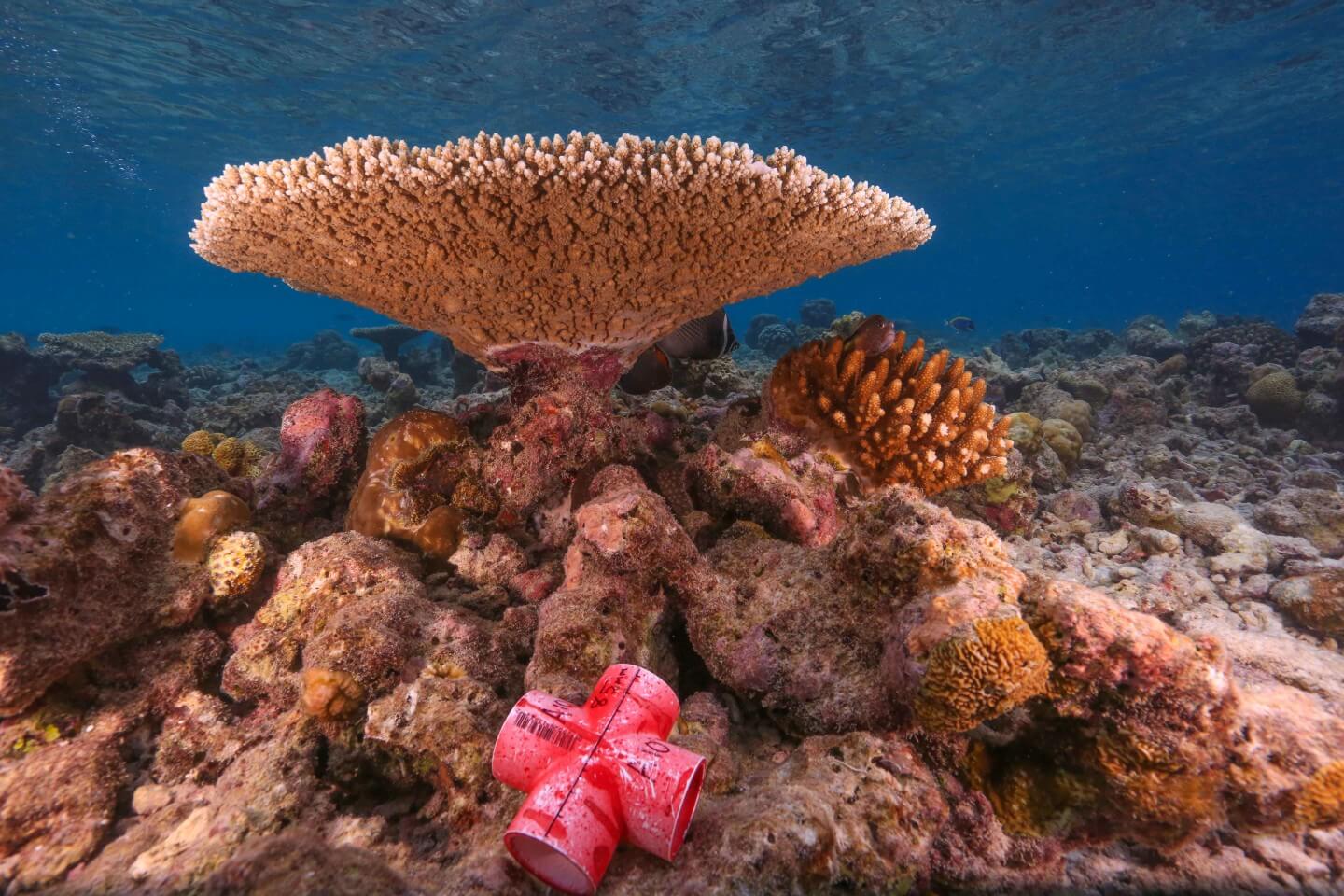
Alison: Is there a new technology that is currently being researched that, if fully developed, would completely change the field of marine science?
Sly: There’s one huge thing, which would be to be able to relay data underwater to an out-of-water receiver. So something like having an underwater robot with the ability to communicate with a satellite. This is really difficult because the air/water interface is really challenging because they’re very different mediums.
Technologies that work underwater, like sonar, work fundamentally differently when they exit the water and then are transmitted in air.
Things like LIDAR as well—so lasers underwater, we worked with those, and if you shoot the laser underwater and try to communicate with a satellite, it will bounce off the top of the surface of the water, and just refract and reflect; it can’t penetrate that interface, it’s really difficult.
There’s an XPRIZE Challenge this year to 3D map the world’s oceans and we’re going to be entering that alongside partners like Maker Corps and OpenROV.
One of the stipulations is you have to map it and then relay the data without any human intervention. What that’s probably going to mean is that the robot goes underwater, collects the data, comes up to the surface and then relays the data to a satellite, or to an antenna. But it would be much better if we could just relay the data in real time.
Alison: A lot of your work is not just modeling the reefs, but disseminating the material so that non-technically trained scientist can explore and experience the reef. Why are you so drawn to this?
Sly: I think because I grew up in Mississippi, and we didn’t have a lot of opportunities. I was one of the lucky ones who was given a chance. I just really think that there are a lot of amazing people out there, and that if they just had the opportunity, or the information, or access to information, they could do a lot.
I started off with design, art, and science, and wanting to combine them.
But now I see that when I go on expeditions in these remote places, it’s not enough to just survey the reefs, get data, show people cool 3D models, and then leave. You need to partner with people that are activists that are promoting the change within these ecosystems, within these countries.
It makes it so much harder, because if you really want to impact or change something, you have to look at the whole picture, and incorporate all the different elements, which we couldn’t do by ourselves.
We need to set up some sustainable efforts to help supplement, or augment their livelihood in areas where we could help increase impact. In a lot of these coral reef nations there’s also a lot of political corruption, and I just got a glimpse of that this past December in the Maldives.
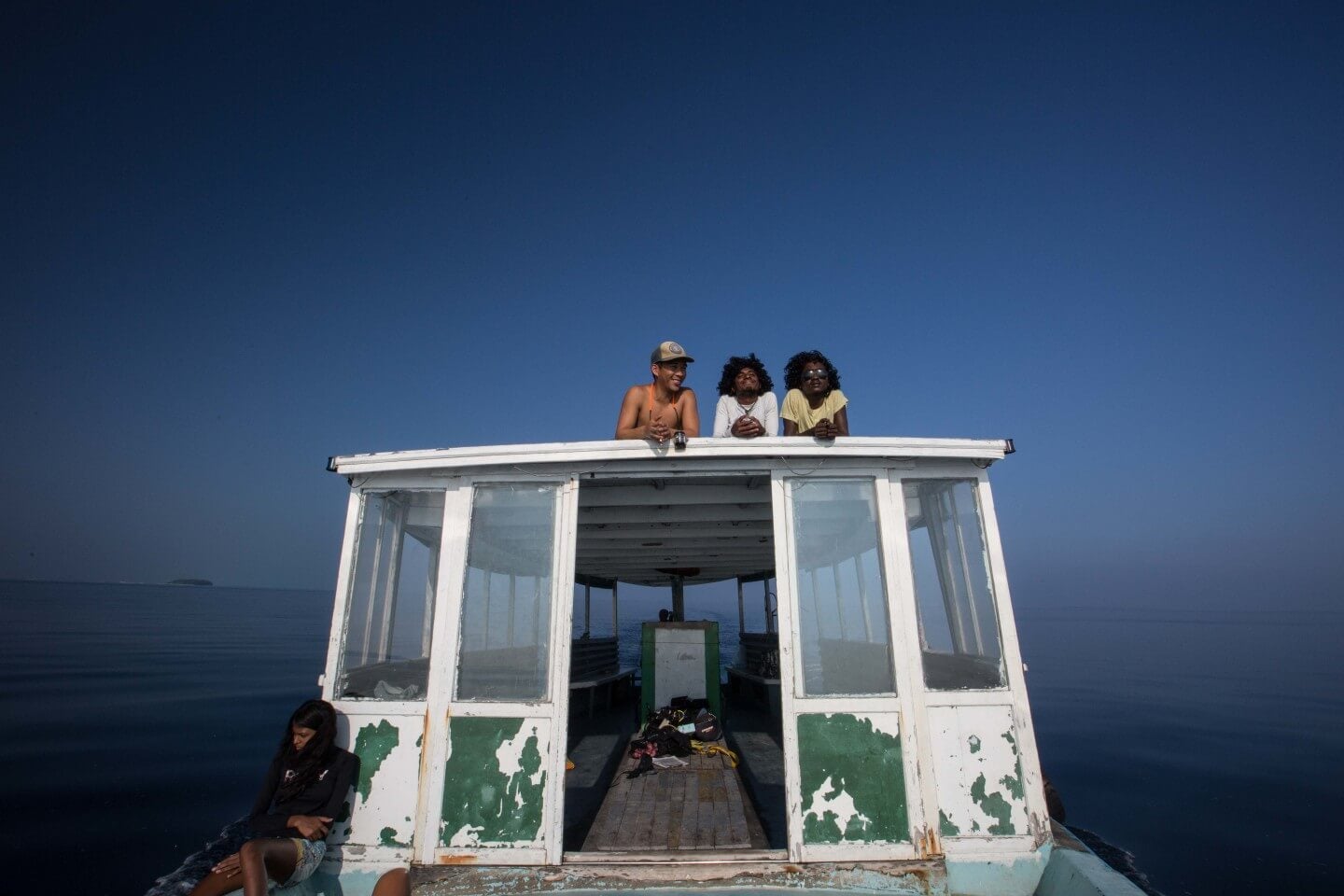
Alison: Last question—as of right now, what’s the legacy that you hope to leave behind?
Sly: Damn, a legacy question.
Alison: Was it too cliché?
Sly: No, it’s not.
Part of the legacy I want to be remembered for is with the work we’re doing with Emerge, the project we built at SU, which is in unlocking human potential. I really also would like to be seen as someone that was a driving force in bringing together science, design, and education, because they’re just now starting to see the potential overlap between the fields.
I also think we’re going to live forever. I think that’s my legacy. I just want to live forever. Does a legacy count if you don’t die?
Alison: I don’t know. Does legacy count if you don’t die?
Sly: There is no legacy if you don’t die. You’re just—
Alison: You’re just there, so probably you don’t have a legacy.
Sly: Then I don’t want the legacy because I want to live forever.
Connect with me on twitter @DigitAlison or @SingularityHub, and tell me what inspires your work.
You can follow the full series here or learn more about Singularity University’s Graduate Studies Program, which is now accepting applications for the 2016 class.
Subscribe to Exponential Thinkers weekly newsletter to receive each new story and additional curated content.
Photography shot by: Alison Berman and The Hydrous



